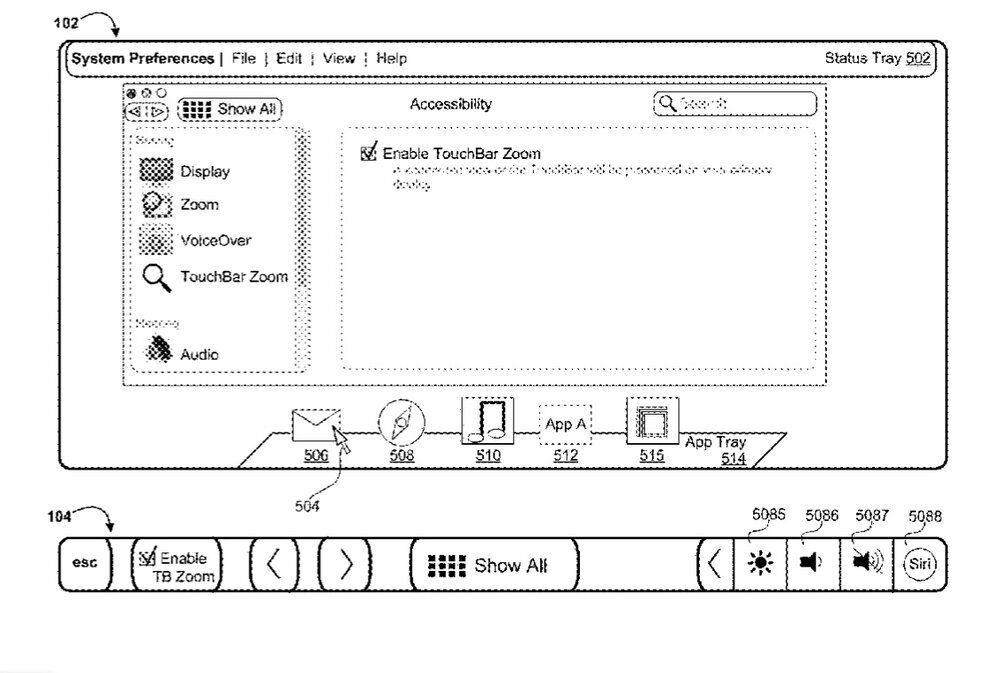Apple has been granted a patent (number 10,649636) for “systems and methods for enabling low-vision users to interact with a touch-sensitive secondary display such as the Touch Bar on some Mac laptops.
In the patent data, Apple notes that vision problems often prevent many users from appreciating and using features available through touch-sensitive input devices that are also used to display affordances (that is, the possible actions available). For example, users of touch-sensitive secondary displays that may be located above a physical keyboard may not be able to view certain affordances because their fingers are occluding or covering up the affordances while they are displayed at a secondary display.

What’s more, the affordances displayed in such secondary displays are often small. These problems are particularly acute for low-vision users, who may have difficulties seeing certain affordances that are displayed at a secondary display, and these difficulties are worsened and amplified by the aforementioned occlusion problems. Apple wants to change this.
Here’s the summary of the invention: “Disclosed herein are systems and methods that enable low-vision users to interact with touch-sensitive secondary displays. An example method includes: displaying, on a primary display, a first user interface for an application and displaying, on a touch-sensitive secondary display, a second user interface that includes a plurality of application-specific affordances that control functions of the application. Each respective affordance is displayed with a first display size.
“The method also includes: deteing, via the secondary display, an input that contacts at least one application-specific affordance. In response to detecting the input and while it remains in contact with the secondary display, the method includes: (i) continuing to display the first user interface on the primary display and (ii) displaying, on the primary display, a zoomed-in representation of the at least one application-specific affordance. The zoomed-in representation is displayed with a second display size that is larger than the first display size.”
